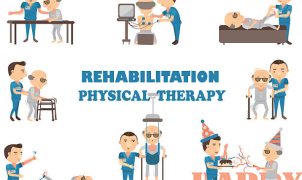Thalassotherapy, or sea water therapy, involves utilizing components of seawater, algae, seaweed, marine mud, and even coastal climates to enhance health, healthcare, and beauty. The term originates from the Greek words Thalassa (sea) and therapia (treatment), coined by Dr. Jacques de la Bonnardière of France in the 1860s. Traditionally used to treat joint issues and injuries, it remains a sought-after healthcare practice in France, with health insurance covering certain sessions. More recently, the focus has shifted to stress reduction, weight management, and addressing various pains, with many opting for personalized spa visits.
Sea water therapy dates back to the 19th century, although people had been bathing in the sea for its health benefits long before. Today, sea water therapy is a treatment method available at coastal spas and healthcare centers. The therapy takes various forms, including sea baths, exercise, and the use of sea-derived products such as marine mud. Limited studies exist on the therapeutic benefits of thalassotherapy, but some suggest its potential in addressing conditions like muscle stiffness and musculoskeletal disorders. However, it is not a substitute for medical treatment.

1. What is Thalassotherapy?
Thalassotherapy involves using seawater for treatment, a popular alternative therapy in Europe, particularly in Germany and France. Some European medical schools include sea water therapy in their curriculum. Thalassotherapy may include:
- Bathing or swimming in seawater
- Applying sea products like seaweed or mud to the body
- Spending time near the sea
- Consuming supplements containing sea-derived elements
Thalassotherapy is akin to balneotherapy, where individuals bathe in mineral-rich spring water. The key difference lies in thalassotherapy exclusively using seawater. Limited scientific studies have examined its effectiveness, but proponents argue for its benefits due to the mineral content in seawater, including sodium, chloride, magnesium, potassium, calcium, and iodine.
2. Health Benefits of Thalassotherapy
Several studies suggest potential health benefits of thalassotherapy:
2.1. Stroke:
- A 2020 study involving underwater exercises for 45 minutes five days a week over two weeks showed improvements in pain, balance, mobility, and overall quality of life.
2.2. Muscular Dystrophy:
- An older study from 2005 assessed the impact of combined sea water therapy and exercise in 58 individuals with muscle stiffness. The program produced temporary benefits over 3-6 months but did not have prolonged effects.
2.3. Mental Health:
- The same 2005 study also explored the therapy’s impact on participants’ mental health. While short-term improvements were noted, they were less significant than physical health improvements.
2.4. Skin Conditions:
- Climate-based therapy, involving relocating to a specific climate for health improvement, was found to enhance the quality of life for those with conditions like psoriasis and psoriatic arthritis near the Dead Sea.
2.5. Bone Conditions:
- In a study with 60 participants having various conditions, sea water therapy increased vitamin D levels, associated with reduced pain and severity of conditions. However, sun exposure played a crucial role.
3. How Does Thalassotherapy Work?
A 2019 review suggests various ways thalassotherapy may benefit health. Seawater contact with the skin allows sodium and chloride to penetrate the body, influencing skin cells by altering internal pressure and inhibiting cell death. Coastal air tends to be cleaner and less allergenic, potentially aiding respiratory conditions like asthma. Additionally, beneficial properties of marine plant and animal substances, such as omega-3 fatty acids in fish oil, are highlighted.
Proponents believe that sea air may have benefits, as tiny seawater droplets inhaled during breathing contain beneficial elements.
4. Thalassotherapy Treatment Methods
Various thalassotherapy treatments are offered at spas and healthcare centers, including:
- Sea Baths: Immersing or swimming in seawater.
- Jet Showers: Showers with seawater or mineral-enriched freshwater.
- Skin Treatments: Spas may use sea-derived products like seaweed wraps or mud applications.
- Exercise: Programs often include underwater exercises like swimming or rhythmic exercises.
- Steam Inhalation/Inhalation Therapy: Using sea water steam or breathing sea air.
Some consider seaweed supplements as a form of thalassotherapy. Examples include seaweed supplements, chlorella, and spirulina.
In summary, thalassotherapy involves leveraging the health benefits of seawater and marine elements. Advocates believe its advantages stem from the abundant mineral content of the sea, including sodium, chloride, and iodine. Thalassotherapy methods encompass sea baths, swimming, hydraulic massage, or underwater exercises. Spending time near the sea, where the air is often cleaner than in cities, may also benefit certain individuals.
Cre: bvnguyentriphuong
























































































































































